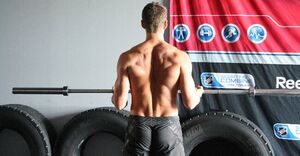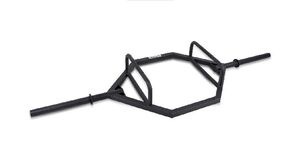
Dumbbell Training from Beginner to Advanced: Unveiling Basic to Advanced Techniques
Are you looking to switch up your workout routine? Consider incorporating dumbbell training.
Not only can it help build muscle strength, but it can also improve balance and coordination.
In this article, we’ll cover all the basics of dumbbell training, including different exercises, selecting the appropriate weight, and mastering beginner techniques.
Whether you’re new to the gym or a regular, we’ll also dive into advanced techniques and assist you in creating a personalized dumbbell workout plan.
Get ready to unlock your full potential with dumbbell training!
What is Dumbbell Training?
Dumbbell training is a form of strength training that utilizes dumbbells, a type of free weights, as the primary resistance to build muscle strength, enhance endurance, and improve overall fitness levels.
This type of training offers a wide range of benefits, including the ability to target specific muscle groups and improve muscular balance. Dumbbells also allow for a variety of exercise variations, making it easy to customize workouts to suit individual fitness goals. They are highly effective for both upper and lower body exercises while also improving core strength.
Incorporating dumbbell exercises into a fitness regimen can lead to increased calorie burn, improved bone density, and enhanced functional strength for everyday activities.
Why Should You Incorporate Dumbbell Training into Your Workout Routine?
Incorporating dumbbell training into your workout routine offers a plethora of benefits, including enhanced strength, improved muscle tone, and the flexibility to progress at your own pace, making it a valuable addition to any fitness regimen.
Dumbbells offer a targeted and efficient way to work specific muscle groups, while also promoting joint stability and balance. With their versatility, they can be used for a wide range of exercises, supporting functional movement patterns and promoting a holistic approach to fitness goals.
One of the key benefits of using dumbbells is the ability to gradually increase resistance as strength improves. This allows for a customizable and sustainable path towards continued progress and enhanced physical development.
Builds Muscle Strength and Endurance
Dumbbell training serves as a potent tool for building muscle strength and endurance, stimulating muscle growth, and supporting progressive development through targeted exercise routines.
Using dumbbells in workouts is a great way to engage multiple muscle groups at once, promoting functional strength and stability. These versatile tools offer a wide range of exercises, making it easier to target specific muscle groups for balanced development.
As individuals progress in their training, they can gradually increase the weight and intensity of their dumbbell exercises. This constant challenge leads to ongoing strength gains and improved muscular endurance.
Increases Bone Density
Engaging in dumbbell training contributes to the development of bone density, promoting skeletal strength and structural resilience through targeted exercises. This fosters an environment for progressive improvement.
Regular dumbbell exercises can have a positive impact on bone health. As the body is subjected to increased load and stress, the bones adapt by producing new tissue. This fortifies the skeletal structure and reduces the risk of fractures and osteoporosis. With consistent training, bone density improves, leading to a stronger and more resilient skeletal system. The progressive nature of dumbbell training allows for continuous challenges, promoting ongoing bone development and strength.
Improves Balance and Coordination
Dumbbell training contributes to the enhancement of balance and coordination, requiring precise movements and body control, fostering the development of physical skill and technique through targeted exercises.
This type of training challenges the body’s ability to maintain stability and equilibrium, promoting the engagement of various muscle groups to execute movements with accuracy.
By practicing controlled movements with dumbbells, individuals can improve their proprioception and spatial awareness, which are essential for effective balance and coordination.
The incorporation of dynamic, functional exercises further intensifies the demand for skillful control and precise coordination, leading to comprehensive improvements in overall physical dexterity and athletic performance.
Can Be Done Anywhere
One of the key advantages of dumbbell training is its versatility, as it can be performed anywhere, whether at home or in a gym, requiring minimal equipment and offering an accessible fitness solution.
Dumbbell exercises provide an excellent option for individuals looking to create a comprehensive workout routine without the need for complex machinery or specialized facilities. This accessibility extends to multiple environments, making it an ideal fitness solution for people with busy schedules or those who prefer the convenience of home workouts.
The minimal equipment requirements also make dumbbell training a cost-effective and space-saving option, allowing individuals to achieve their fitness goals with ease.
What Are the Different Types of Dumbbell Exercises?
Dumbbell exercises encompass a diverse range of movements targeting different muscle groups, including upper body, lower body, and full body exercises. This offers a variety of exercise variations and techniques for comprehensive muscle development.
Dumbbells are a versatile tool for engaging multiple muscle groups at once, promoting balanced muscle development. Use them for exercises like bicep curls, shoulder presses, and chest flyes to target the upper body. You can also incorporate lower body movements like lunges, squats, and deadlifts, and add intensity with techniques like unilateral movements, tempo variations, and isometric holds.
Upper Body Exercises
Dumbbell exercises for the upper body encompass a range of movements targeting the chest, shoulders, arms, and back, offering diverse techniques and variations to enhance muscle strength and development.
When it comes to building a strong upper body, there are a variety of exercises that target different muscle groups. One of the most popular is the dumbbell chest press, which primarily works the chest muscles but also engages the shoulders and triceps.
For strong and stable shoulders, the dumbbell shoulder press is a great option. To target the arms, bicep curls and tricep kickbacks can help isolate and strengthen these muscle groups. And for a well-rounded upper body workout, exercises like dumbbell rows and reverse flys can contribute to overall muscle development and functional strength.
Lower Body Exercises
Dumbbell exercises for the lower body encompass movements targeting the legs, glutes, and hips, offering diverse techniques and variations to promote lower body muscle development and strength.
To improve lower body strength and stability, incorporating exercises like lunges, squats, deadlifts, and step-ups is essential. These movements engage major muscle groups and can be customized by adjusting weight and range of motion. For instance, adding a pulse at the bottom of a squat or holding a static lunge can increase the intensity and target specific muscles. Additionally, incorporating unilateral movements and balance exercises with dumbbells can further enhance lower body strength and stability.
Full Body Exercises
Full body dumbbell exercises engage multiple muscle groups simultaneously, offering comprehensive techniques and variations to promote overall muscle strength, endurance, and functional fitness.
Full body dumbbell exercises are an effective way to target various muscle groups through compound movements. These include exercises like squats, lunges, and overhead presses. Not only do these exercises build strength, but they also enhance balance and coordination.
By incorporating different variations such as single-arm rows, goblet squats, or renegade rows, individuals can challenge their muscles in diverse ways. This promotes overall muscle development and functional fitness. The versatility of full body dumbbell exercises makes them a valuable addition to any fitness routine, supporting holistic strength and endurance.
How to Choose the Right Dumbbell Weight for Your Fitness Level?
Selecting the appropriate dumbbell weight is crucial for effective training, requiring a balance between challenging your fitness level and maintaining proper technique to support safe and progressive development.
When starting a workout routine, it’s important to choose a weight that allows you to maintain proper form during exercises. As you gain experience, gradually increase the weight to continue making progress. This will help prevent injury and ensure that you are challenging yourself without overexertion.
Consider your current strength and endurance levels when selecting weights to ensure safe and effective workouts. Additionally, focusing on maintaining proper technique throughout your training sessions will engage your muscles and prevent strain, resulting in a well-rounded and successful training experience.
What Are the Basic Dumbbell Training Techniques for Beginners?
For beginners, mastering proper form and posture, starting with lighter weights, and gradually increasing repetitions and sets form the fundamental techniques for effective and safe dumbbell training.
This approach allows beginners to build a solid foundation and prevent injuries as they progress in their training journey. It is crucial for beginners to seek proper instruction from certified trainers or reliable sources to ensure they are using the correct techniques.
Focusing on controlled movements and full range of motion will aid in form mastery and optimize the benefits of each exercise. Through consistent practice, beginners can gradually improve their strength, endurance, and overall fitness level with dumbbell training.
Proper Form and Posture
Mastering proper form and posture is essential for beginners, ensuring correct body mechanics and minimizing the risk of injuries during dumbbell exercises. Clear and comprehensive instruction is necessary for beginners to develop good form habits from the start.
Beginners in fitness should prioritize proper body alignment, engaging core muscles, and understanding the correct range of motion for each exercise. Without proper form, they risk straining or injuring themselves, hindering their progress. Instructors play a vital role in guiding beginners to develop good form habits from the start, emphasizing posture, stability, and controlled movement. By mastering these essential elements, beginners can maximize their workouts and establish a strong base for future training.
Start with Lighter Weights
Commencing with lighter weights is paramount for beginners, enabling skill development, honing technique, and gradually introducing the concept of sets and repetitions to support progressive advancement.
This approach not only helps beginners to master proper form and technique but also reduces the risk of injury.
Starting with lighter weights allows individuals to focus on building a strong foundation and understanding the movements involved in each exercise. As beginners progress, they can gradually increase the weight while maintaining proper form, leading to improved strength and muscle development over time.
Introducing sets and repetitions at a manageable level instills discipline and consistency in their workout routine, setting the stage for long-term success.
Gradually Increase Weight and Repetitions
Gradually increasing weight and repetitions is a key aspect of progression for beginners in dumbbell training, fostering the development of strength, endurance, and technique through structured advancement.
This gradual increment allows beginners to adapt to the increasing demands on their muscles and joints, reducing the risk of injury and ensuring sustainable growth. It also encourages the body to adapt to heavier loads, improving overall strength and power.
By progressively challenging the muscles with heavier weights and more repetitions, beginners can enhance their technique, refine movement patterns, and lay a solid foundation for more advanced exercises.
What Are Some Advanced Dumbbell Training Techniques?
Advanced dumbbell training techniques include supersets, drop sets, negative repetitions, and pyramid sets, challenging individuals to push their limits and diversify their workout routines for heightened physical development.
Incorporating these techniques into a workout regime can enhance muscle confusion and stimulate additional growth.
Supersets, where two exercises are performed consecutively with no rest, create metabolic stress and efficient muscle recruitment. Meanwhile, drop sets involve gradually reducing the weight to continue the set beyond fatigue. Negative repetitions focus on the eccentric phase of a movement, promoting strength gains. Pyramid sets, on the other hand, involve increasing weight and decreasing reps or the reverse, providing dynamic variations in intensity.
Supersets
Incorporating supersets into dumbbell workouts involves consecutive exercises targeting the same muscle group, promoting muscle fatigue and advanced training stimulus for accelerated physical development.
This training technique maximizes the effectiveness of each workout session by allowing for minimal rest between sets, pushing the targeted muscles to their limits.
By seamlessly transitioning between exercises, supersets also encourage diversified exercise variations, contributing to a holistic approach to muscle targeting and development.
This not only helps in breaking through plateaus but also adds a new level of challenge for individuals seeking advanced workouts and continuous muscle adaptation.
Integrating supersets with dumbbell training elevates the intensity and efficiency, leading to significant gains in strength and muscle definition.
Drop Sets
Utilizing drop sets in dumbbell training involves progressively reducing weight and maximizing repetitions within a single exercise, challenging muscle endurance and promoting advanced progression for enhanced physical development.
This technique not only aids in pushing past plateaus and muscle fatigue but also plays a crucial role in advanced training challenges.
By incorporating drop sets, individuals can intensify their workouts, leading to greater muscle activation and extended time under tension, which can contribute to muscle hypertrophy and strength gains.
The implementation of drop sets in dumbbell training can also support weight reduction by enhancing overall metabolic rate, making it a valuable tool for those seeking to elevate their exercise progression and achieve advanced workout goals.
Negative Repetitions
Incorporating negative repetitions in dumbbell exercises involves emphasizing the eccentric phase of the exercise, promoting advanced muscle control, and fostering strength development through targeted resistance.
This technique focuses on working the muscle during the lengthening phase of the movement, requiring a deliberate and controlled approach to lowering the dumbbells.
By slowing down this portion of the exercise, the muscles are subjected to greater tension, leading to increased muscle fiber recruitment and stimulating greater strength gains.
The controlled nature of negative repetitions helps in refining exercise form and enhancing overall muscle coordination, enabling individuals to execute advanced workouts with precision and control.
Pyramid Sets
Pyramid sets in dumbbell training involve a structured progression of increasing and decreasing repetitions and weight, offering a comprehensive approach to advanced training and muscle development.
This method allows for variation in repetitions, starting with a low weight and high reps, gradually increasing the weight and reducing the reps with each set.
The pyramid sets effectively target different muscle fibers and maximize muscle fatigue, promoting advanced muscle development. As the intensity increases, the pyramid sets challenge the muscles to adapt and grow stronger, making it an efficient method for overall muscle progression.
How to Create a Dumbbell Workout Plan?
Creating an effective dumbbell workout plan involves aligning exercises with fitness goals, structuring sets and repetitions, and incorporating rest and recovery days to support progressive development and overall physical well-being.
This alignment ensures that each exercise contributes to specific fitness objectives, such as strength building, muscle toning, or endurance enhancement.
Structuring sets and repetitions strategically promotes muscle adaptation and growth while preventing plateauing.
Integrating rest and recovery days is crucial to allow muscles to repair and grow, leading to balanced physical development and preventing overtraining.
Considering these elements when designing a dumbbell workout plan is essential for achieving targeted fitness results and maintaining a healthy exercise regimen.
Determine Your Fitness Goals
The first step in creating a dumbbell workout plan is to determine specific fitness goals. This facilitates the selection of exercises and the establishment of a structured progression for comprehensive physical development.
This process of goal setting is crucial as it guides the direction of the workout plan. It also ensures that the exercises chosen align with the desired outcomes.
By identifying whether the goal is to build strength, increase muscle endurance, or improve overall fitness, individuals can tailor their dumbbell workouts accordingly. This customization plays a vital role in maximizing the efficacy of the plan, as it enables individuals to focus on exercises that directly contribute to their fitness goals, leading to noticeable physical progress over time.
Choose the Right Exercises for Your Goals
Selecting the appropriate exercises that align with fitness goals is pivotal for a successful dumbbell workout plan, emphasizing the integration of sets, repetitions, and proper technique to support progressive development.
When choosing exercises, it’s important to consider individual fitness goals. A combination of compound and isolation movements can cater to overall strength and muscle development.
Integrating sets and repetitions in a progressive manner is crucial for continued growth. This can include increasing weight or reps over time.
Maintaining proper technique throughout each exercise is necessary for targeted physical development and reducing the risk of injury.
By carefully selecting exercises and adhering to proper form, individuals can maximize the effectiveness of their dumbbell workout plan.
Plan Your Sets and Repetitions
Structuring sets and repetitions in a dumbbell workout plan is essential for fostering progression, targeting muscle groups, and promoting balanced physical development through systematic exercise regimens.
This structured approach allows individuals to gradually increase the weight, ensuring continuous muscle engagement and adaptation over time. It also assists in preventing plateaus and injuries by providing a clear framework for the intensity and volume of the exercises, thus enabling a comprehensive and effective workout routine.
By strategically planning sets and repetitions, individuals can effectively target specific muscle groups, enhancing overall strength and endurance while maintaining a balanced and harmonious physical development.
Incorporate Rest and Recovery Days
Integrating rest and recovery days into a dumbbell workout plan is crucial for supporting physical progression and overall well-being. This provides the necessary time for muscle repair and rejuvenation.
These periods of recovery play a vital role in allowing the body to adapt to the demands of the workout. This aids in the prevention of injuries and muscle fatigue.
By allowing time for physical rejuvenation, individuals can experience increased strength gains and improved performance. Incorporating rest days promotes mental well-being by reducing stress and fatigue, ultimately contributing to a more balanced and sustainable fitness journey.




No Comments